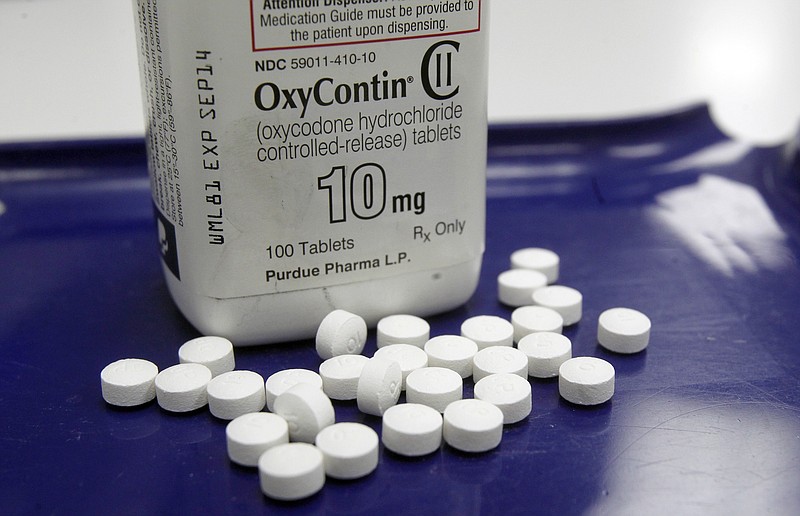The opioid epidemic is changing how providers treat pain, but health care leaders say patients need to change, too, when it comes to their pain expectations.
"You should expect that you're going to have some pain, and you should also understand that taking a narcotic so that you have no pain really puts you at risk of becoming addicted to that narcotic," Dr. Michael Schlosser, chief medical officer for Hospital Corporation of America, told Nashville Public Radio last week.
Dr. Kevin Lewis, chief medical officer for Parkridge Health System, emphasized that new pain protocols are not designed to induce fear or anxiety in patients, but rather have the patient's safety and well-being in mind.
"Nobody in this conversation is saying that there are not legitimate reasons and scenarios where someone needs pain medication," Lewis said. "Having said that, major procedures and major injuries hurt - there's a reason why our bodies are designed to experience pain."
Lewis remembers a time when medical professionals touted the age-old saying "no pain, no gain." Until changing pain management standards and potent new narcotics, or opioids, revolutionized health care.
"And all of the sudden, in the new approaches ... it was the opposite," he said.
The consensus heading into the 21st century was pain was undertreated, which led the medical community to embrace pain as a "fifth vital sign," often treating it aggressively with prescription opioids expertly marketed by large pharmaceutical companies.
"If you could prescribe these relatively innocuous medications to people, and it wasn't addictive, why not?" said Dr. Nita Shumaker, president of the Tennessee Medical Association. "I mean, you were being inhumane if you didn't treat people's pain."
But then, drug overdose deaths in the United States more than tripled from 1999 to 2015 - one of the many sobering statistics in the U.S. Centers for Disease Control and Prevention's latest drug-related surveillance report that states, "The current epidemic of drug overdoses began in the 1990s, driven by increasing deaths from prescription opioids that paralleled a dramatic increase in the prescribing of such drugs for chronic pain."
Now, many health care leaders are calling for change.
While opioids are powerful pain relievers, they also can be powerfully addictive, particularly when taken in high doses for longer periods of time.
"We've all started to realize, 'Now wait, they are addictive to some people,'" Shumaker said. "And it's really difficult to screen out who that's going to be."
Lewis said it's time "to find the right place somewhere in the middle."
"The data is clearly showing that many people who get addicted to opioids or narcotics have their very first exposure to them when they require medical care or a produce," Lewis said. "So even though that [prescription] may have been well- intentioned, it turned out later on to be a problem."
Pain medicine accounts for 49 percent of opioid prescribing, followed by surgery at 37 per- cent, and physical medicine or rehabilitation at 36 percent, according to the CDC. However, approximately half of opioid pain relievers dispensed come from primary care providers.
Lewis and Shumaker said there are many promising alternative pain-management medications and strategies, which include but are not limited to nerve blocks, lower doses of multiple non-narcotics, nutrition, ice, stretching, and even music, massage therapy and acupuncture.
Dr. Helen Kuroki, chief medical officer at CHI Memorial, said physicians are now utilizing a protocol called "enhanced recovery after surgery," or ERAS, which uses non-narcotic preparation for surgery known as prehabilitation.
"This process often combines acetaminophen with a non- steroidal anti-inflammatory medication, along with a third type of non-narcotic medication called gabapentin," Kuroki said. "The pre-operative use of these medications, combined with peripheral nerve blockades in appropriate surgeries, has resulted in a dramatic reduction in the amount of perioperative narcotics needed to control pain."
Opioids can actually hamper recovery, Lewis said, because their sedation effect limits mobility, so these alternative methods could improve the healing process.
"We care that you're in pain and want to work with you on those solutions," he said. "It has been irresponsible of us in medicine to try and give people the notion that after major surgery somehow they would be free of pain all together - the worst thing to do right now would be to not acknowledge that and not do anything about it."
Contact staff writer Elizabeth Fite at efite@timesfreepress.com or 423-757-6673.
